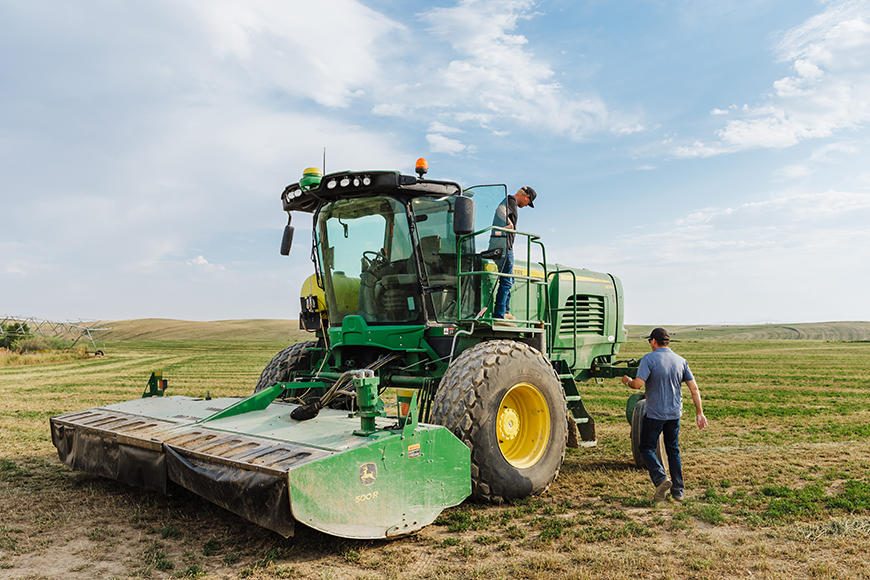Now that most haylage and silage has been harvested many growers pay little attention to it and simply begin feeding it when forage is needed. However, some examination of your forage will help you use it more wisely to produce greater economic return. The following six points will help you increase the value of the forage and the return from it.
If you have excess forage, consider if you want to sell any of it. Before feeding, examine each lot of forage separately. Consider the following:
![]()
- Inventory your hay, haylage and silage. Consider that a ‘lot’ of forage is that harvested on one day and will likely have a different forage quality than a lot harvested on another day. Determine the total forage tonnage by lot.
- Test each lot for forage quality separately. This information will help you feed the highest quality to those animals that will benefit most from it. Save the greater than 150 RFQ for milking dairy cows, dairy sheep and dairy goats. Feed 125-150 RFQ for growing animals and dry cows. Lower quality forage can be said with appropriate supplements – don’t be caught off guard and suffer poor animal performance.
If you have excess forage, consider if you want to sell any of it. Before feeding, examine each lot of forage separately. Consider the following:
- Was any of the harvested forage grown under droughty conditions? If so, do any of the grasses, corn silages, millets or sorghums need to be tested for nitrate toxicity? Identifying problems early will prevent animal sickness and, possibly, deaths. Early identification may also allow moderately high nitrate forage to be used if properly diluted with other forages.
- Check the density of the haylage in each bunker, pile or tube. If density is less than 45 lbs/ft3 think about how the silage can be packed better next year. Also, consider that Lactobacillus buchneri inoculant application when ensiling would have reduced silage heating on feedout of less dense than ideal haylage or silage. For less than ideally dense silage consider that heating (and energy loss) will be increased during feedout and silage should be fed as quickly as possible once the bunker or tube is opened.
- Watch for mold in the haylage or silage. Some molds may be toxic, but the most common animal response is reduced intake. As little as 5% moldy silage mixed in with 95% good silage will reduce animal intake by 0.1 to 0.2% of body weight. The reduced intake means less weight gain or less milk production.
- Lastly, monitor moisture content of the silage frequently during feedout. When weighing components of a TMR, the dry matter added will depend on the moisture content of the forage. The figure below shows the moisture content of alfalfa haylage sampled daily from the face of a bunker. Moisture content often varied by 5 to 10% over a 3- to 4-day period. Silage dry matter of the bunker face declined (probably on a rainy or snowy day) and then increased (likely when the sun was shining). This variation reinforced the importance of frequent testing (for at least moisture content) so that consistent dry matter is included in the TMR.



